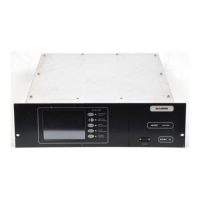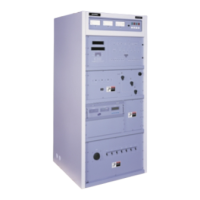Carefully performed calorimetric power measurements are gen-
erally considered more accurate than through-line wattmeter
measurements.
Higher accuracy is obtained if the flow gauge reading is close to
full scale, but reduced flow is usually required to calibrate aural
power levels because the lower power results in a smaller tem-
perature differential.
If the flow rate is uniform, a volume meter (which measures total
cubic feet of water) of may be connected in series with a sight
glass flow gauge. The flow measurement in G.P.M. may then be
confirmed by reading the number of cubic feet of water passing
through the meter in a timed period, converting the cubic feet to
gallons, (1 cu. ft = 7.48 gal.), and dividing by the length of the
timed period in minutes.
Before selectinga flow meter,calculate aflowratethat willresult
in a 10°C temperature differential, based on visual average
power. Use this figure as a starting point when selecting a flow
gauge.
Thermometers are commonly available with 0.1°C accuracy.
Since some digital thermometers have resolution in larger steps
than the specified accuracy, check the resolution as well before
selecting. Since some digital units are disrupted by RF fields,
laboratory grade mercury thermometers may be necessary in
hostile RF environments.
5.11.3
Visual Peak-Sync to Average Power Conver-
sion Formulas
The transmitter’s visual power meters read peak-of-sync power,
but through-line meters and calorimeters yield average power
measurements.
If a test signal consisting of only blanking and sync (black
picture) is used, the following formulas apply:
For M/NTSC systems:
P
average
=P
peak-sync
x0.595
P
peak-sync
=P
average
x1.68
For B/PAL and B/SECAM systems:
P
average
=P
peak-sync
x0.568
P
peak-sync
=P
average
x1.76
5.12 Power Calibrations
The following procedure is used to calibrate the RF power
detectors for each of the PA cabinets. The calibration procedure
consists of using a known good power indicator as a reference,
driving a cabinet to a known output power, and calibrating the
forward and reflected peak detector output samples to a voltage
which corresponds to full cabinet power output when seen by the
monitor system.
Single cabinet systems are calibrated with the visual portion
running at full peak-sync power. Multiple cabinet systems are
calibrated with one cabinet on at a time, based on known rela-
tionships between power out of a single cabinet and power out
of the transmitter.
Figure 5-3. Directional Coupler Alignment Setups
Section V - Maintenace
Rev. B: 1/11/1999 888-2365-001 5-5
WARNING: Disconnect primary power prior to servicing.
